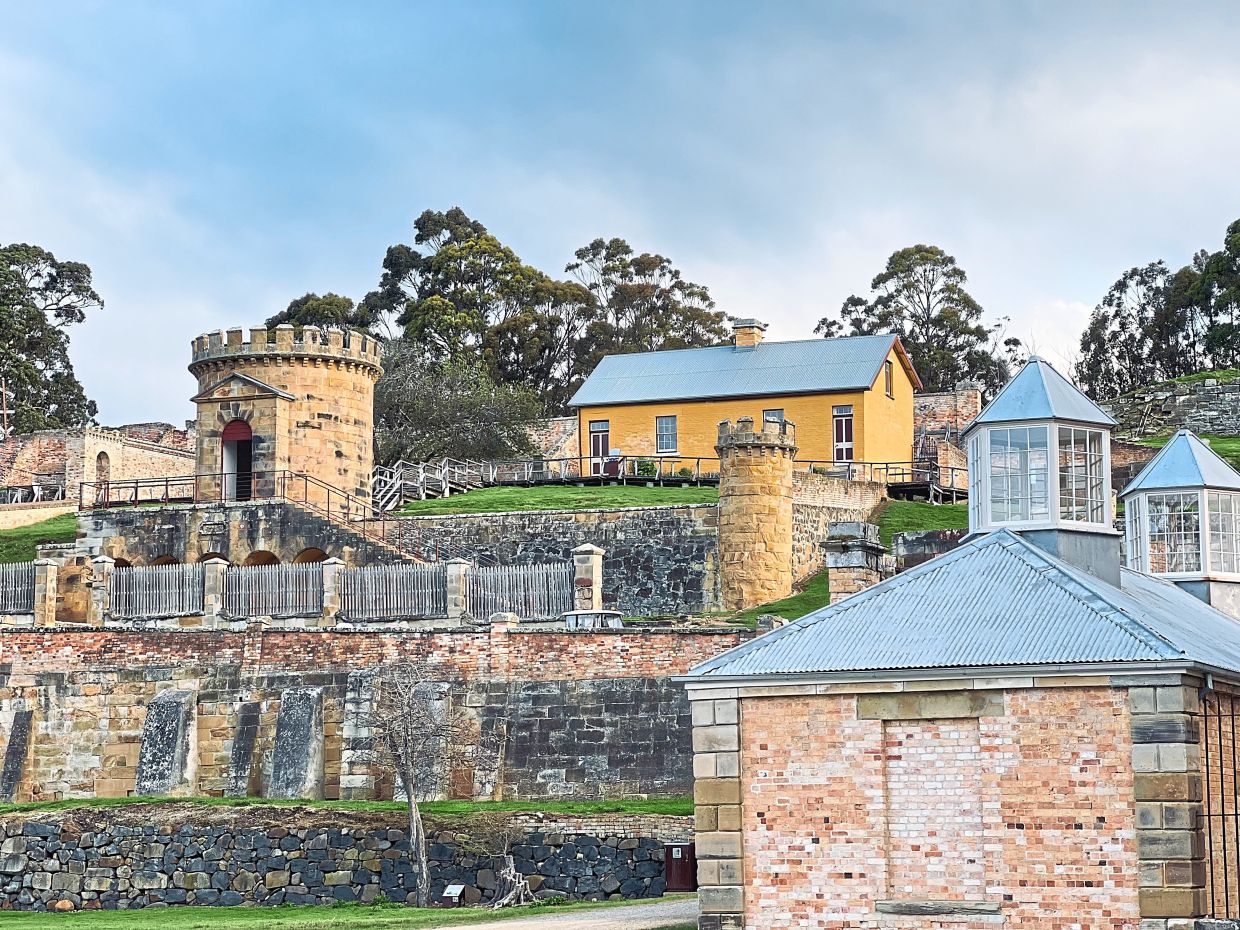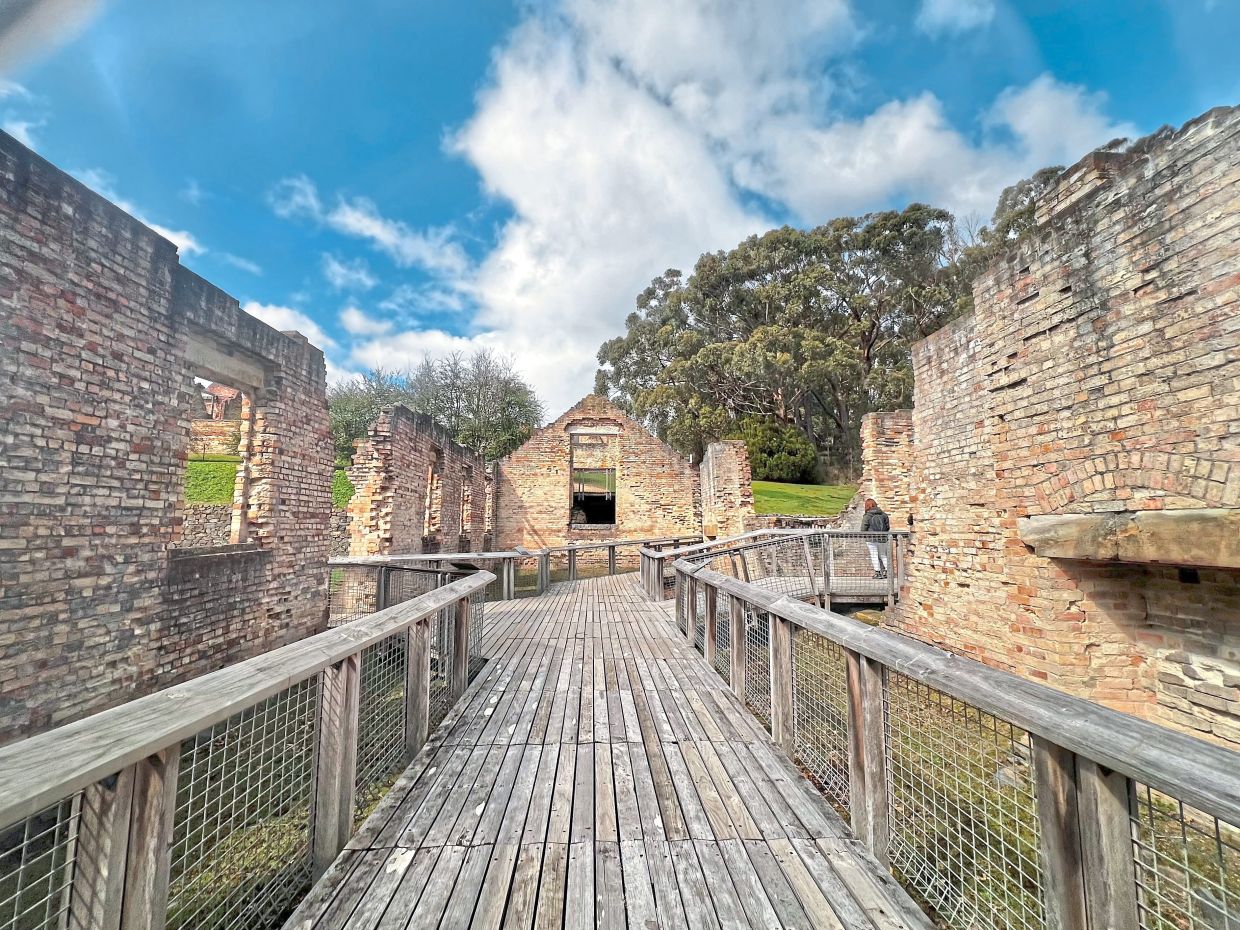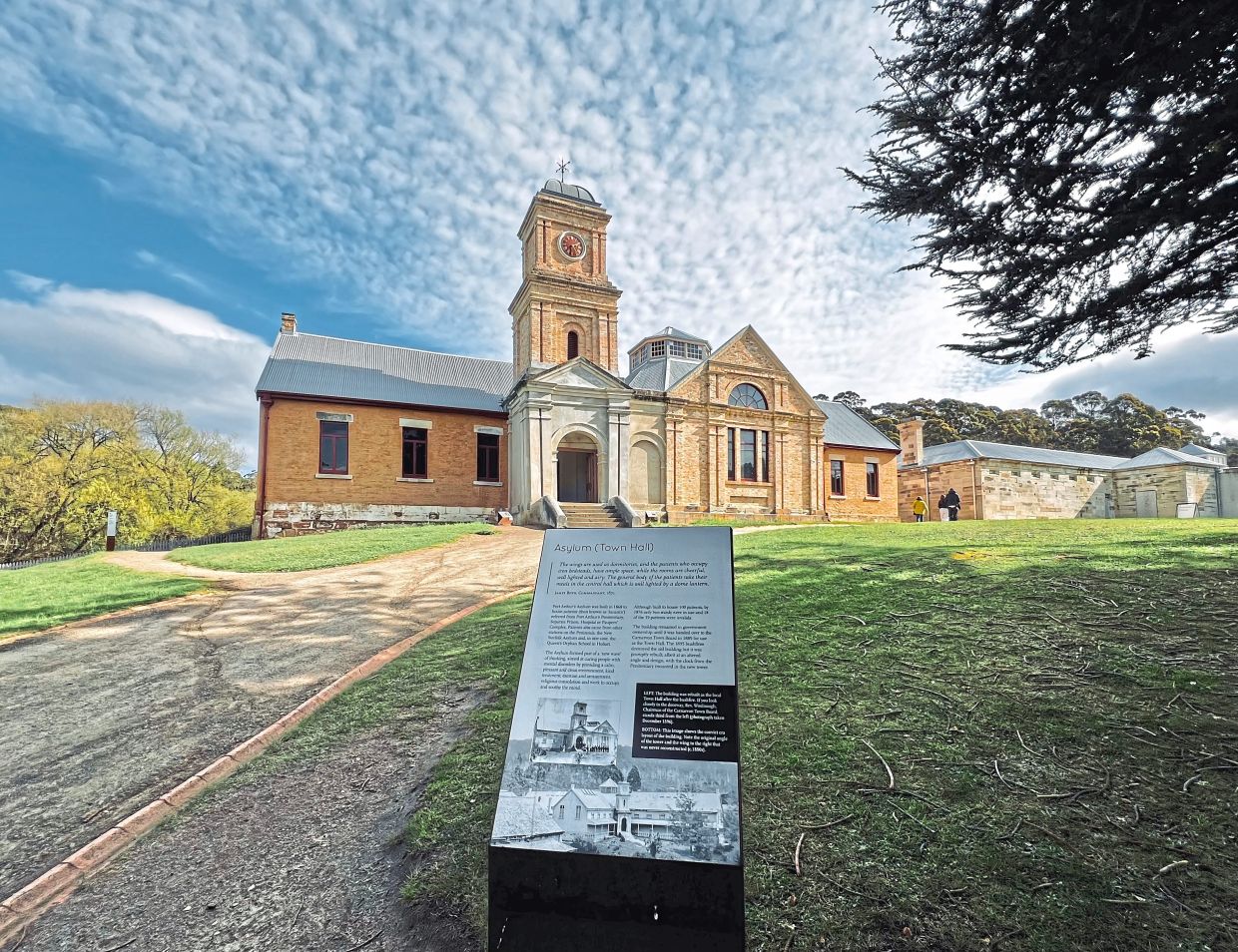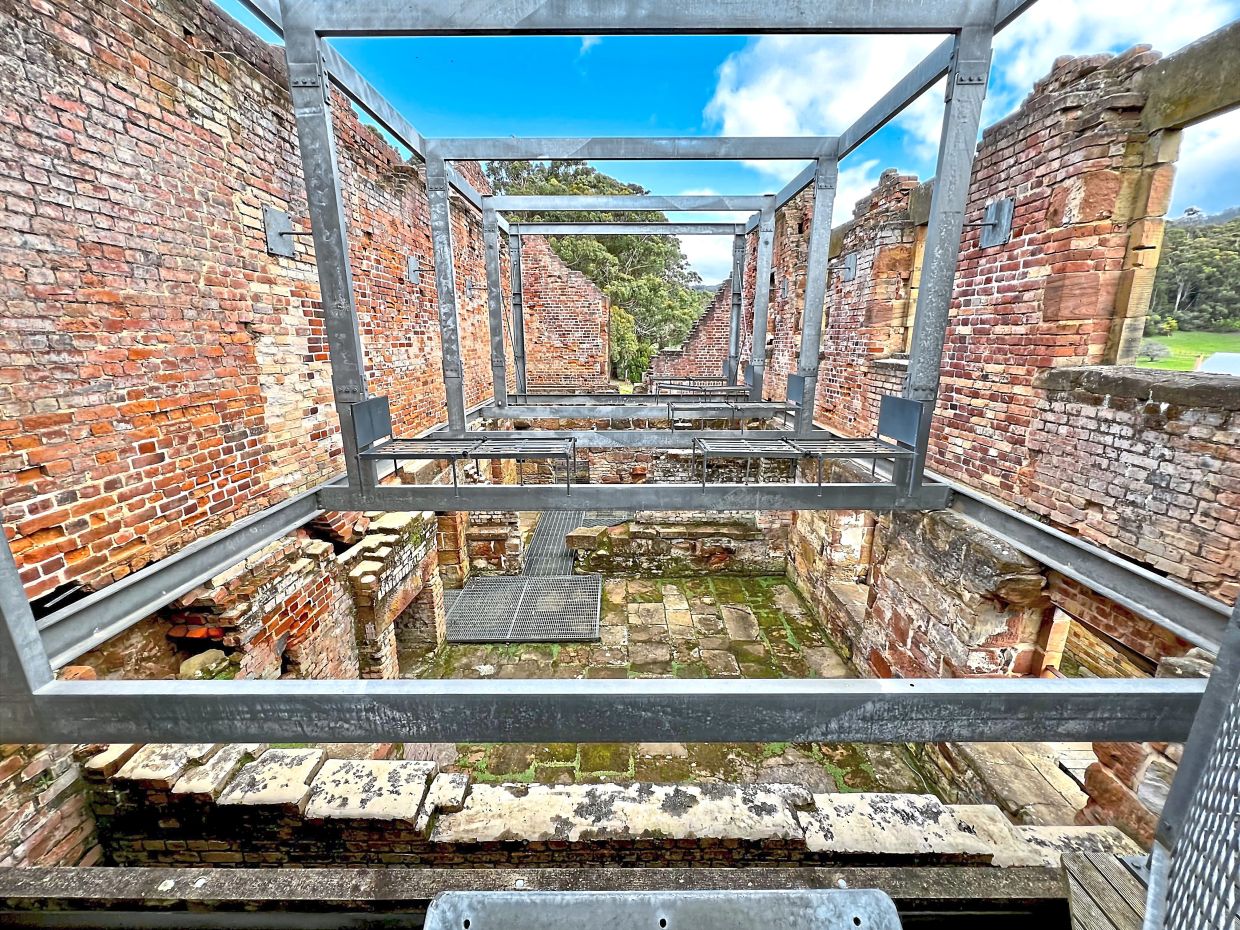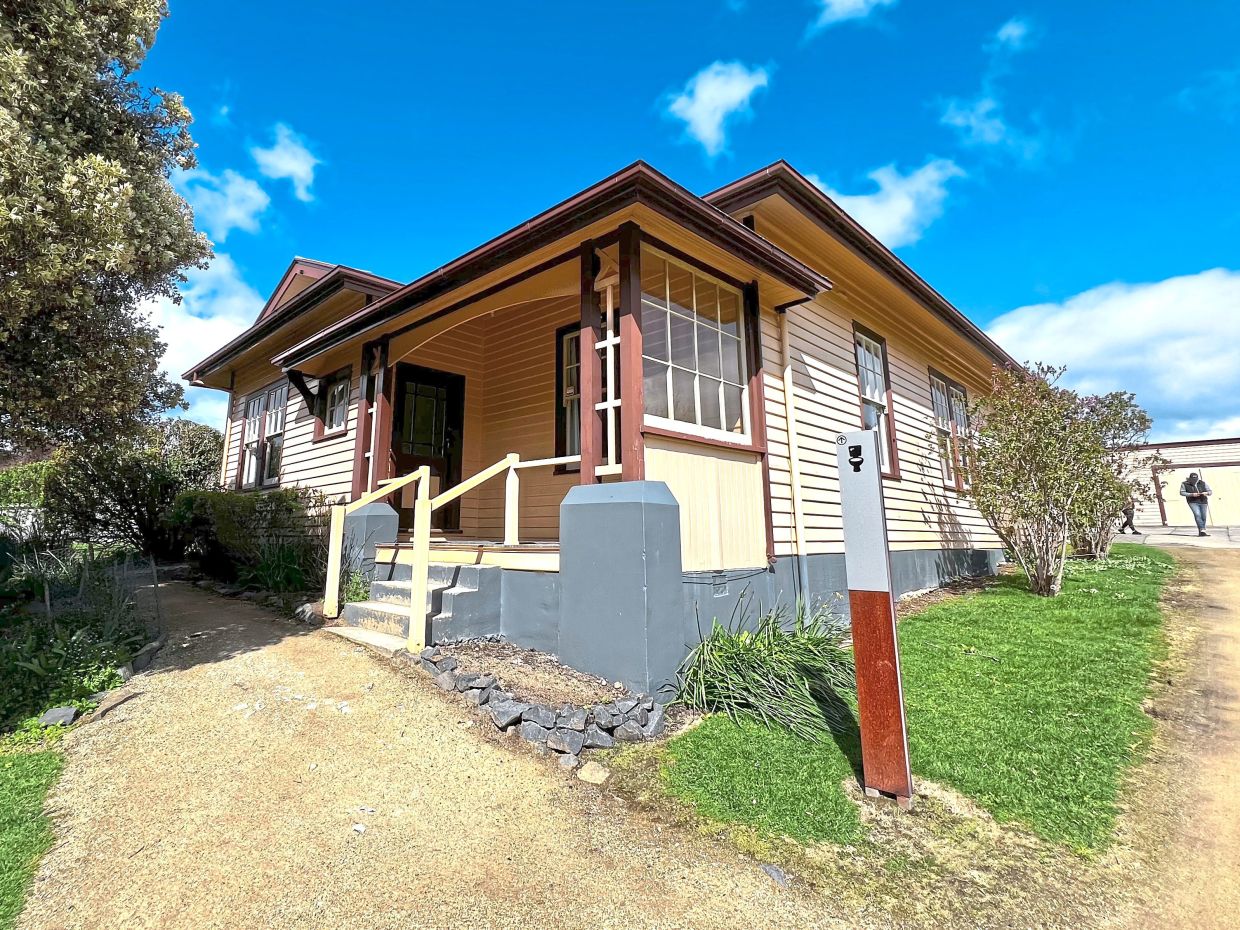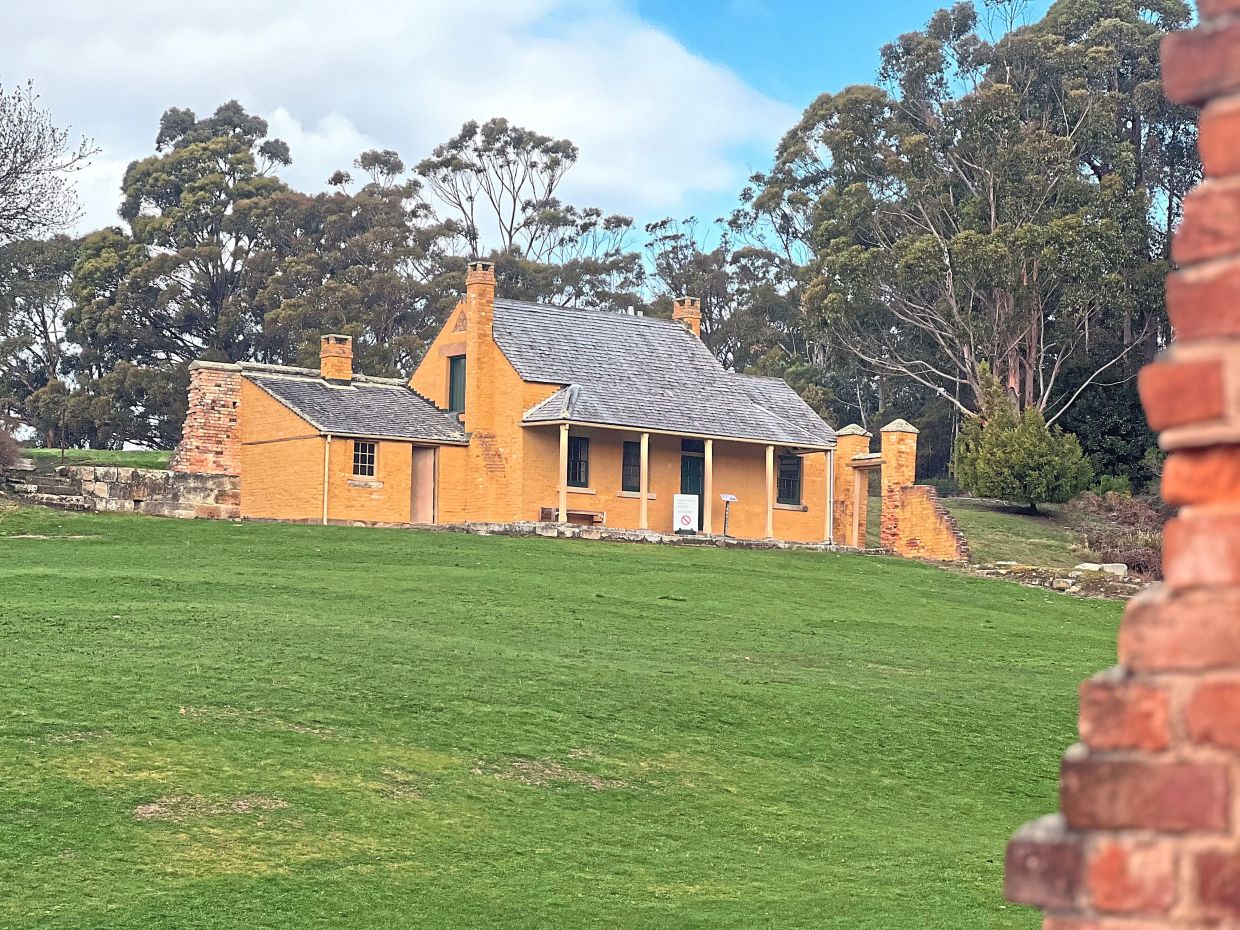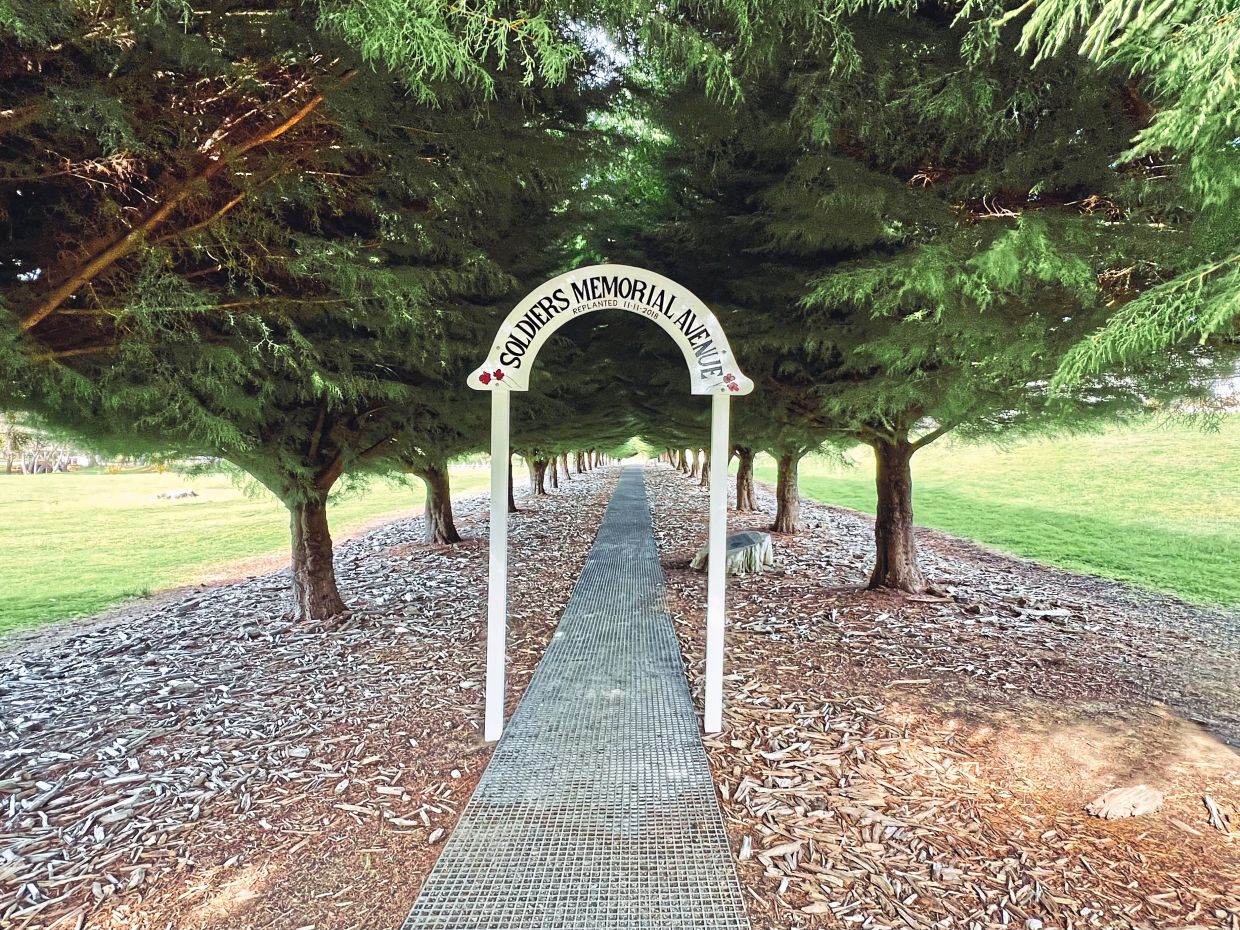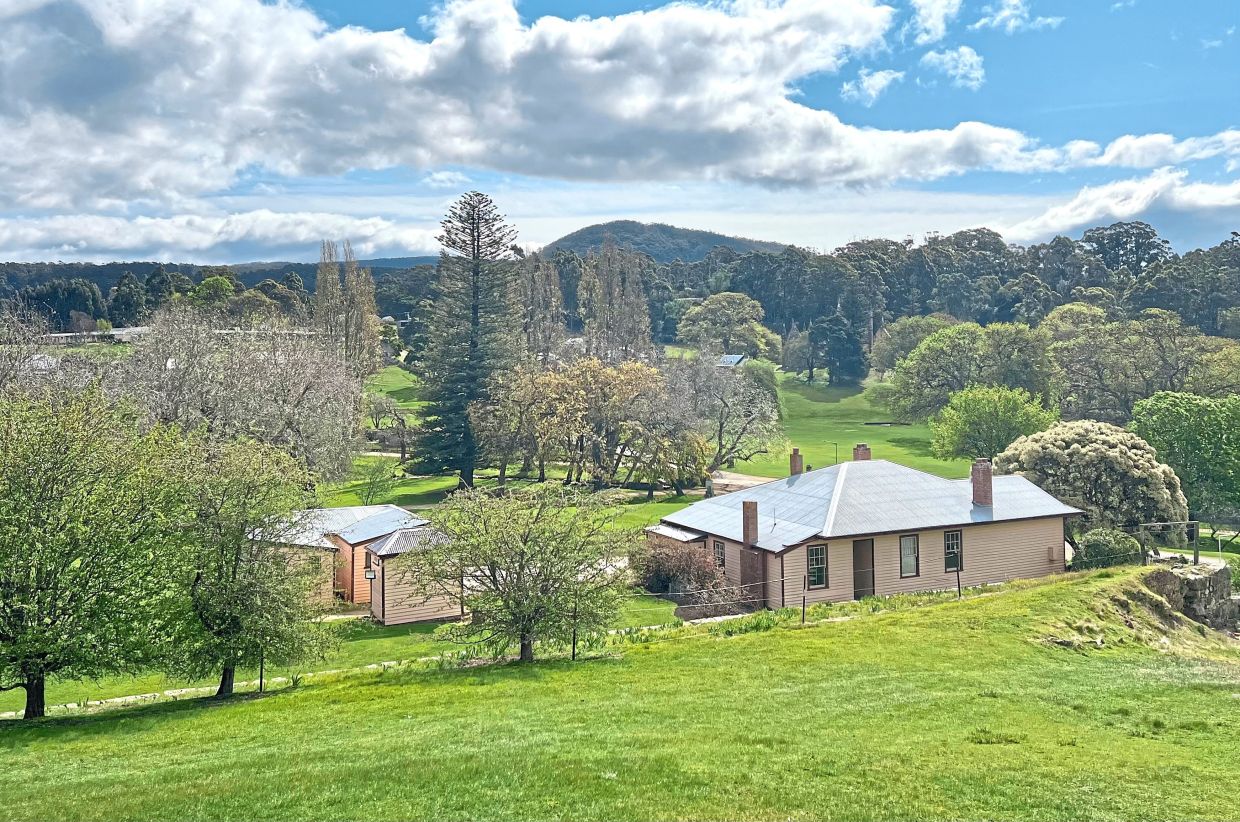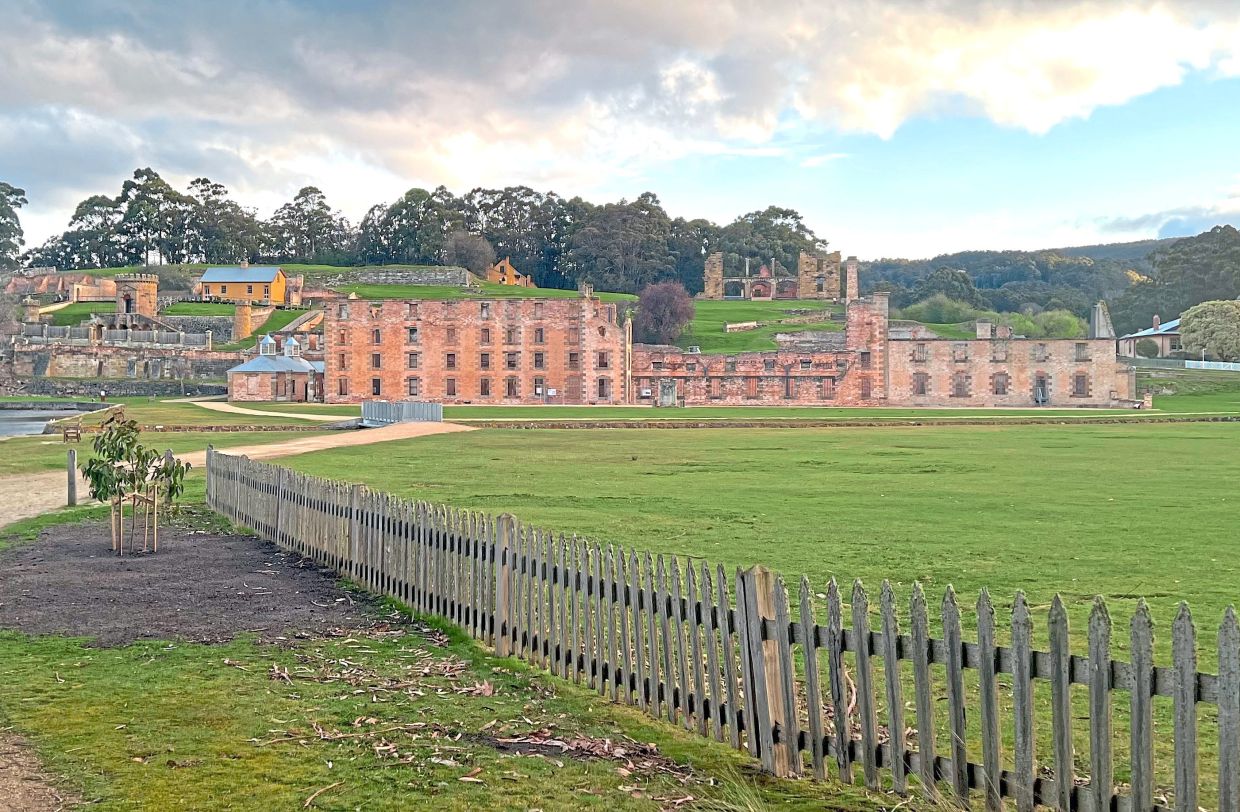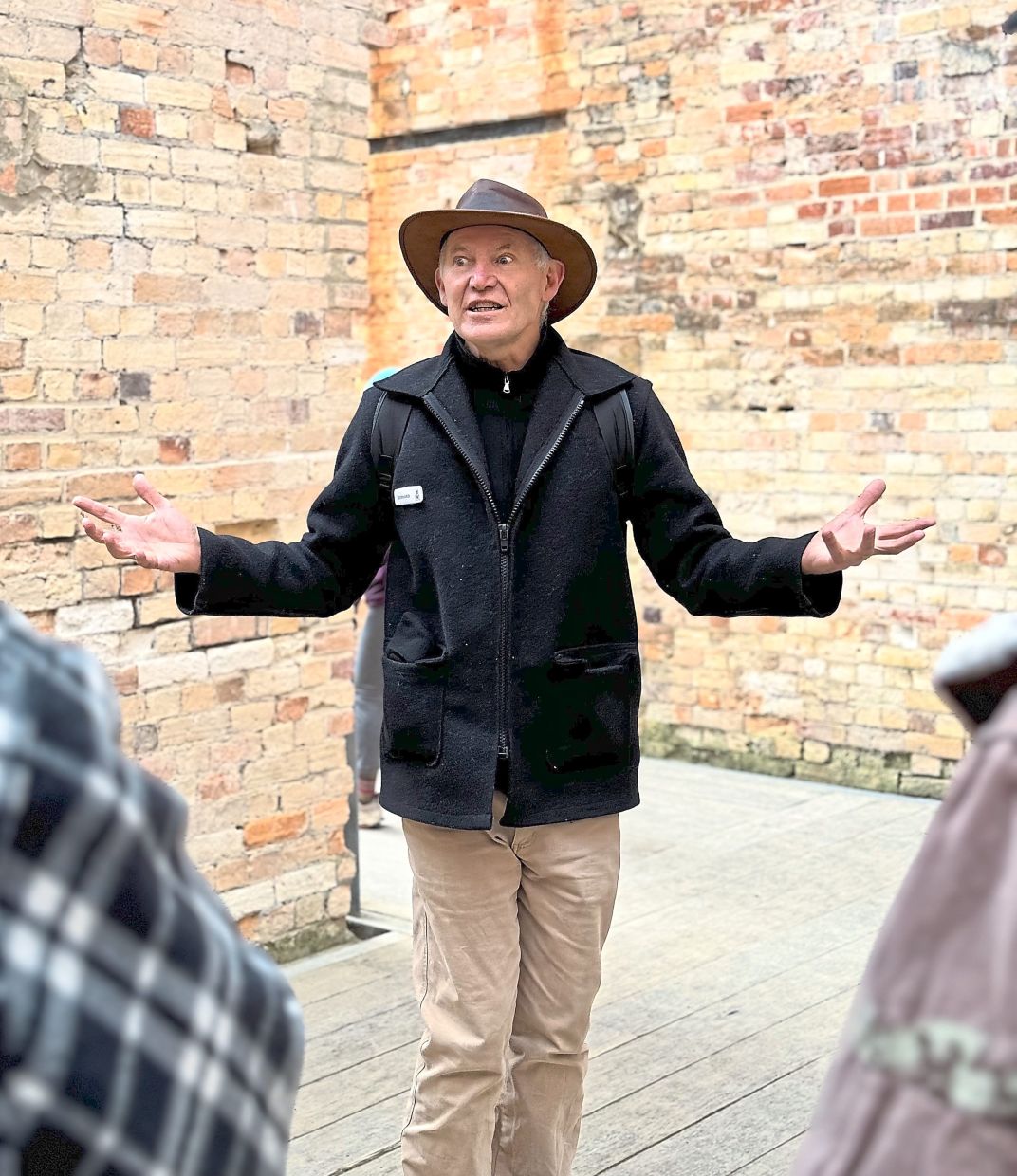The Guard House at Port Arthur is now a museum. — Photos: GISELE SOO/The Star
For decades, the clanking of prison shackles, mingling with the usual din of the town, was a familiar sound for the residents of Port Arthur in Australia’s island state of Tasmania.
The place was once known for being a penal settlement, where convicts were transported to by the British Empire between 1830 and 1877. This was a time when free settlers and thousands of convicts coexisted.
These convicts were initially sent to the United States by the British because prisons in England were overcrowded. When this stopped, the prisoners were then transported all the way to Australia.
Penal transportation was a method of punishment in the British legal system that originated in the 17th century, where people sentenced to exile for their crimes were “shipped” to New South Wales (in Australia) until the discovery of Port Arthur in 1830. This practice effectively alleviated the issue of overcrowding in jails in England, but made things worse in Australia.
Having visited the Melaka Prison Museum in Malaysia before, I found the idea of an entire town designated as a prison very interesting and therefore thought that exploring the place would be an eye-opening experience. So, off I went with my friends to the Port Arthur Historic Site during our recent trip to Tasmania.
It is recommended that visitors set aside at least half a day to explore the expansive grounds – generally, the walking tours take about 90 minutes – which feature various attractions.
Admission tickets can be purchased online or at the ticketing counter. Several guided tours are available for an additional charge, including a ghost tour in the evening, the Isle Of The Dead Cemetery tour and the Escape from Port Arthur tour.
We bought a two-day access pass to the site, which we used to cover over 30 historical buildings, beautifully-manicured gardens, as well as museums and a gallery.
We were also able to experience the stunning inlet of the Tasman Sea through a 20-minute, narrated harbour cruise. We passed by landmarks such as the Dockyard and the Point Puer Boys Prison.
To know more about the history of Port Arthur, visitors can also listen to a podcast that explores the town’s history, its residents and their stories. Additionally, complimentary talks are provided around the place. The schedule changes daily, so be sure to keep an eye out on the locations and time.
An intriguing way to discover the “fates” of the townspeople is through the collection of playing cards at the gallery. Each card bears a number or letter that corresponds with the drawer containing information on each person’s life.
Back to history
For thousands of generations, the isolated land of Port Arthur was inhabited by Paredarerme, the Tasmanian Aborigines, before they were taken to Flinders Island in the early 1800s, said our Port Arthur guide, Bernard Lloyd.
Surrounded by untamed ocean and abundant natural resources, Port Arthur was soon established as a timber-collecting station by the lieutenant governor of Van Diemen’s Land (what Tasmania used to be called), George Arthur.
“Convicted felons were used as labourers,” said Lloyd.
“The thick forests and high sea cliffs made Port Arthur a natural prison, where escape was impossible,” Lloyd said. But this wasn’t just any prison, he added, it was home to repeat offenders.
“The town was built specifically for men who had continued to break the law. It was for the recidivists – ‘the worst of the worst’.”
Despite Port Arthur’s geographical isolation and tight security – it was heavily guarded by soldiers and dogs – escape attempts were inevitable.
Over the years, the settlement saw many audacious attempts to escape, from a convict disguised as a kangaroo to another who swam across the wide sea to reach the narrow isthmus nearby.
Many convicts also tried to leave by sea using makeshift boats they secretly constructed, but were met with tragic ends, including drowning.
As Arthur’s exploration continued, he uncovered other resources on the island including clay deposits and fertile agricultural soil, contributing to the growth of Port Arthur as a major penal settlement.
At the other side of the bay, Point Puer was set up as a prison for juveniles, specifically, boys. “Hundreds of (Charles) Dickens’ famous pickpockets were sent here,” he added.
As the community gradually expanded, Port Arthur transformed into a thriving hub of activity. “More than 2,000 prisoners and hundreds of officials – soldiers, doctors, lawyers and administrators – and their families called Port Arthur home.”
Here, convicts undertook a range of occupations, such as timber-getting, quarrying, and farming. Many also became shoemakers, blacksmiths and carpenters.
Every day, convicts moved about their task under the watchful eye of officers. Whether it was fixing the crumbling stone streets or constructing buildings, their labour was crucial in the community.
During this period, Lloyd shared, a couple of hundred buildings were constructed. Unfortunately, only a handful of these structures remain standing today as most were destroyed by a series of bushfires in the late 1890s, while some were dismantled due to disrepair.
Labour and punishment
As we eagerly wandered along the path, beautifully adorned with greenery, a striking brick complex appeared on the horizon. It was The Penitentiary, one of the largest ruins within the compound.
Erected in 1845, the four-storey high edifice originally functioned as a flour mill and granary before being converted into a prison nine years later, said Lloyd.
In its heyday, a water-powered wheel was used to grind wheat into flour, which then produced over 500 loaves of bread each day – “enough to feed every prisoner”.
But the community quickly found themselves in trouble when the water flow ran low due to the lack of rainfall, which meant that the wheel could not be powered.
“Desperate to recoup the enormous expense, the commandant built a gigantic tread wheel beside it (as an alternative fix to the inadequate water supply). It was a laborious task that required convicts to climb the steps continuously for hours each day to keep the wheel turning, often with minimal rest,” Lloyd explained, adding that it was one of the harshest forms of punishment in the colony.
“Convicts loathed it. It was deemed the most difficult, dangerous, painful, and monotonous punishment,” he added.
The treadmill served not just as a supplementary power source, but as part of a disciplinary system to reform offenders.
However, the solution was short-lived, leading to the permanent closure of the flour mill. “Not only was the machinery plagued with problems, but the cold and wet climate also made it difficult to grow wheat.”
By 1854, the building was given a second life, serving as a penitentiary for the next 23 years until the penal settlement shut down in 1877.
It fell into disuse and suffered major damage from fires, leaving behind remnants visible in the masonry walls and barred windows – prominent features of its facade.
Stepping into the mostly bare building today, which are reinforced with massive steel bars, we could only imagine what it must have looked in its prime. Though it originally stood four storeys high, the destruction from fire has obscured much of its former glory.
Lloyd’s expert storytelling throughout the tour certainly brought the surroundings to life, painting vivid images with his words. We could visualise what the prison was like – complete with a chapel, library and dormitory, and, of course, over 135 prison cells.
“The library held an extensive collection of 14,000 volumes consisting mainly of trade manuals and religious tracts, along with instruction guides for wood carving and bricklaying,” said Lloyd.
Within the building was also a room designated for night school, where inmates learned to read, according to our guide. But writing was excluded from the curriculum, as it might empower them to compose letters of complaint!
When it came to the prisoners’ living conditions, Lloyd said that it depended on which cell they were assigned.
“The spacious and better- ventilated dormitory on the top floor was reserved for well-behaved convicts, while the ones in heavy irons, often the most troublesome, were placed in tiny, cramped cells on the bottom two floors,” he explained. “These cells were dark and cold.”

Besides being confined to gloomy and frigid cells, psychological torture was another form of punishment at the settlement.
Some prisoners were sentenced to the Separate Prison, where they had to endure silent isolation and sensory deprivation. They were locked in single cells for 23 hours a day with no opportunity to speak unless addressed by a guard.
Stripped of their identities, they were reduced to mere numbers, and when led outside their cells, they were required to wear hoods to maintain anonymity.

The future
The Separate Prison is among the structures that has survived throughout the centuries, and today’s visitors can get a complimentary tour of the section.
Lloyd said that barely a month after the prison’s closure in 1877, tourism began to flourish, drawing in curious visitors captivated by the site’s notorious past.
In an effort to shed Port Arthur’s grim history, the community renamed the town Carnarvon. But the new name did not last long – it was changed back to Port Arthur in the 1920s.
We also managed to participate in the guided talks offered at the Commandant’s House, the Junior Medical Officer’s House, the Guard Tower and Asylum, which are museums that you can visit.
The town’s revival continued for another century until a mass shooting in 1996 that killed 35 people, prompting its permanent closure as a liveable town.
Today, Port Arthur is simply a historical landmark and tourist attraction that people can visit, but not live in. It was added to the Unesco World Heritage Site list in 2010.
Port Arthur, Tasmania
The Guard House at Port Arthur is now a museum. — Photos: GISELE SOO/The Star
Port Arthur
Today, only a handful of buildings still stand, as many of them were destroyed by fires.
Port Arthur served as a penal settlement for many decades in the 1800s. — Photos: GISELE SOO/The Star







